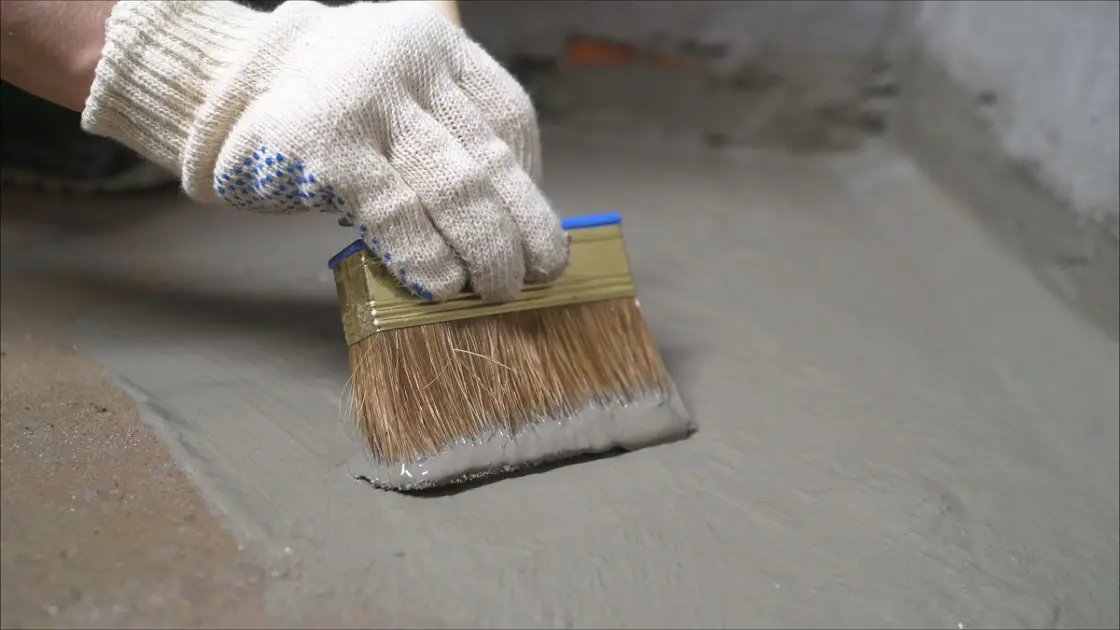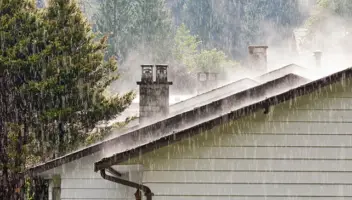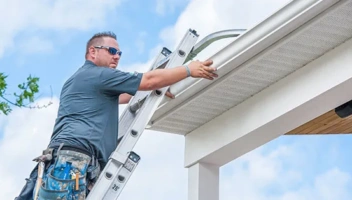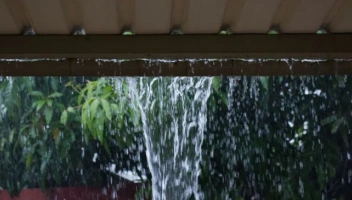Basement Waterproofing: How To Do It, What It Costs & More

The sounds of waves or waterfalls are soothing and tranquil, but when there’s water pooling in your basement, it’s anything but. If you don’t want a pond in your basement, waterproofing can help protect your finished or unfinished basement from leaks and flooding.
Water damage in your basement isn’t as pretty as the ocean or rainforest, and mold, which produces allergens that can potentially be toxic, can really wreak havoc with your health. Considering the dangers of a wet basement, knowing what to look for and preventing the worst from happening is vital for your home and your family.
Basement waterproofing is a process that includes everything from a simple sealant or coating you apply to the inside walls of your basement, to more complex matters that involve digging trenches or dry wells on your property.
Identifying the source of the problem is a key factor in determining the best way to waterproof your basement.
In this article:
- Causes of a Wet Basement
- Dangers and Signs to Look For
- Preventing a Wet Basement
- Basement Waterproofing Methods
- What Does Basement Waterproofing Cost?
- Frequently Asked Questions
Causes of a Wet Basement

Basements are notorious for being damp, dark, and musty, but they certainly don’t have to be. The following are the most common reasons why your basement is wet.
- Heavy rains
- Snow and ice melt
- Improper landscape grading
- Blocked drainage systems
- Missing, damaged, or clogged gutters and downspouts
- Structural damage to the foundation
- Poorly designed or installed window wells or covers
- Malfunctioning sump pump
- High humidity levels in the basement
- Faulty washing machine, sink, or hot water heater connections
Dangers and Signs to Look For

The horrors of home water damage are enough to make anyone tremble. The dangers of a wet basement can be scary, from wood rot to buckling floors, and the insects that come with standing water.
Mold and mildew are among the most common results of water damage and also one of the top reasons for respiratory problems in people. Given the risk of mold, basement mold removal is necessary should you spot white, green, or black spots, which can all indicate the fungus is growing.
Aside from an obvious pool of water in the basement, other water damage signs to look for include:
- Personal property damage: Check over personal items stored in the basement. Mold, mildew, musty smells, damp touch, darkened spots, or a change in texture could indicate water damage. If it’s not taken care of properly, personal items left to hang around in areas with excess moisture can lead to insect infestations, unpleasant odors, and fungal growth.
- Bulging floor boards or cracked tiles: If water is seeping up through the basement floor, you may notice your floor isn’t very even anymore. Bulges, dimples, cracks, and erosion are all signs that ground pressure has increased, more than likely due to over-saturated soil. If this problem isn’t fixed, it could lead to costly repairs in the long run.
- Warped doors, window frames, or jams: Doors and windows in the basement are susceptible to temperature and humidity changes. If you find any warped doors or windows, this could indicate that there’s too much moisture in your basement. Over time, this could lead to troubling health concerns.
- Dark spots or water stains: Not all stains are water stains, and not all dark spots mean water damage. However, darker areas of the basement’s concrete foundation could indicate the material has eroded enough to take on more water from the outside, which could leak through to the inside of your home.
- Extra bugs: Bugs love the dark and dampness, and they need water to survive. If your basement is wet, you may have the perfect atmosphere for little critters.
Preventing a Wet Basement
Let’s face it, prevention is always better when we’re trying to outmaneuver a potential problem. If you don’t already have a wet basement, following a few steps goes a long way to never dealing with a wet basement in the first place.
Inspect Your Home

Basement waterproofing methods range from the simple to the complex, and until you know what you’re dealing with, it’s tough to come up with the correct answer to prevent basement leaks.
So, if you want to avoid a wet basement, inspect your home from top to bottom—everything from the roof to gutters to siding to foundation.
- Check over the foundation, inside and out, for cracks, fine lines, or wet spots. Pay attention to the basement floor for warping, bulging, or buckling. Flooring laid over the concrete might crack or change texture or color. Also, check the corners of the basement for erosion or soil poking through.
- Consider an inspection of your roof and attic. Damage to the roof could lead to all kinds of problems, including water finding its way to the basement. The attic is also important to check for water damage—either older signs that mean an ongoing problem or newer signs like wet spots or dripping.
- Look at your rain gutters and downspouts to determine whether they need repair, replacement, or a good, old-fashioned cleaning. A clogged gutter or downspout can cause a backlog of water that runs off your roof directly to the ground below, resulting in pools of water accumulating at the base of the foundation.
Downspouts should be at least 5 feet away from your home’s foundation to effectively divert water far enough away to prevent it from seeping back into your basement.
LeafFilter’s proven gutter protection system is a permanent solution to clogged gutters. Having our award-winning gutter guards installed can save the time and money you’d otherwise spend regularly cleaning out your gutters.
Our system utilizes patented technology to keep your gutters clog-free, and each professional installation also includes a limited lifetime transferable warranty, so you can have peace of mind knowing that your home is protected from potential water damage from clogged gutters for years to come.
- Take a walk around your property and assess the natural grading around your home. Your landscaping is essential in determining how water is absorbed into the earth or drained from the surrounding area. You may find you need to redo your property’s grading so it slopes away from your home and not toward it, or install a drainage system to divert excess water away.
When to Waterproof a Basement

The best time to waterproof your basement is during new construction and in dry weather. But you don’t want that new construction to be in jeopardy because you failed to waterproof your basement in time to prevent a disaster.
Determine whether or not your damp, musty basement is the result of water leaking in from the outside or from high indoor humidity levels where condensation could be an issue. The following signs indicate it’s time to waterproof your basement:
- Cracks in the foundation or flooring
- Bowing or buckling walls or flooring
- Infestation of insects or pests
- Musty smells, with or without visible mold or mildew
- Warped doors, windows, or sills
- Water stains or other darkened areas
- Obvious wet signs like drips, pools, and beads of water
Basement Waterproofing Methods
With a range of basement waterproofing methods, it’s crucial to determine your specific needs if there’s water in your home. Different waterproofing methods work better in certain circumstances than others.
The basement waterproofing method used depends on when the house was built and how the surrounding land or structures are situated. Of course, your budget matters, too.
Simple solutions such as topical sealants may be enough for fine cracks on your basement walls if moisture is coming from the outside soil.
More complex solutions seal the outside of your foundation for the best results. This might also require a permit or a licensed contractor if excavating is involved.
Interior Basement Waterproofing

Interior basement waterproofing methods include:
- Coatings and sealers: From plastic sheets and waterproof panels to concrete sealant, interior coating or sealing acts as a barrier, and may not prevent water from getting in from the outside. Coatings and sealers can only be applied to dry, unpainted basement walls, but they typically dry fast.
- Waterproof paint: Similar to coatings and sealers, waterproof interior paint can help keep your basement walls from getting damp.
- Dehumidifier: Dehumidifiers are an easy way to remove extra moisture in the air. Depending on your basement needs, using a dehumidifier may be all that’s necessary to keep your basement dry.
- Sump pump: Any basement that’s prone to flooding or water seepage should have a sump pump. Sump pumps remove excess water from the basement via a hole (a sump) in your basement for when it floods. As the hole fills, the pump kicks on to move the water to another location away from your house.
- Window or vent coverings or sealers: If your basement features windows or vent openings, don’t forget to seal any cracks around the perimeter.
- Drainage system: A basement with previously known water issues may need an interior drainage system, especially if sealants or coatings have been unsuccessful in the past.
Exterior Basement Waterproofing

Exterior basement waterproofing methods include:
- Home upgrades: Making upgrades to your home’s exterior can help prevent water from getting inside. Repairs and renovations to your roof, eaves, gutters, downspouts, and siding should be your first consideration to keep the integrity of your home’s structure. For instance, clogged gutters can lead to water damage that impacts your basement and your home’s foundation, but gutter guards can help prevent clogged gutters. As LeafFilter gutter guards have a clog-free guarantee, you won’t ever need to worry about finding the time to clean out your gutters—or paying a professional to do it for you.
- Drainage systems: Outdoor drainage systems are an effective way to divert water away from the base of your home. Options include a swale (a shallow trench that encourages water to flow toward a predetermined endpoint), French drain (an underground network of pipes), dry creek (similar to a trench but designed with decorative stones or rocks), and drip path (an area under the eaves of your home that catches water runoff, promoting absorption into the earth).
- Landscaping: Waterproofing your basement may require regrading your property so water flows naturally away from your home. Take the opportunity to create a rain garden or other aesthetic feature to enhance curb appeal.
- Dry wells and retaining ponds: A dry well is as it sounds—a well that remains dry so it can collect excess water from your property, keeping it away from your house. It’s often the end point of various drainage systems. Likewise, a retaining pond has a similar function but is much larger.
What Does Basement Waterproofing Cost?
We believe that everyone deserves top-notch gutter protection without breaking the bank.💰 With LeafFilter, you can say goodbye to clogged gutters and hello to savings! Check out our pricing here: https://t.co/PlQg9QglQw pic.twitter.com/zKJZRk0zu9
— LeafFilter Gutter Protection (@LeafFilter) July 31, 2023
Methods of waterproofing range widely in price, and costs are heavily dependent on multiple factors specific to your wet basement problem. While homeowner’s insurance may cover some of the specific cleanup and damages (depending on the source of the problem), it typically doesn’t cover basement waterproofing services.
There’s a big difference in cost from purchasing a dehumidifier to excavating your property for a drainage system. Lower-end costs include methods like coatings and sealants, while higher-end costs include methods like dry wells and retaining ponds.
The cost of basement waterproofing methods like gutter guards and sump pumps fall somewhere in the middle.
Expect to spend anywhere from hundreds of dollars for small, simple basement waterproofing methods to thousands of dollars for more complex solutions.
Simple fixes may last a couple of years, but more involved waterproofing methods could last the lifetime of the home. On the plus side, if the basement is protected from future water damage, the money you spend will be an investment, as you’ll likely see an increase in the home’s value.
Take the first step to prevent one of the most common causes of water in your basement: clogged gutters. Check out our reviews to learn why more than 1.5 million homeowners have trusted LeafFilter to keep their gutters clog-free, or call us today at 1-833-353-1194 to talk to an expert and get a free inspection and estimate.
Frequently Asked Questions

Is waterproofing a basement worth it?
Waterproofing could save you time, money, and headaches, especially if you live in a water-prone area or have had previous water issues in your basement.
How much value does waterproofing a basement add?
According to Angi, waterproofing your basement could give a 30 percent return on investment.
How do you permanently waterproof a basement?
Waterproofing the outside of your foundation with sealant, plastic sheets, and underground drains is the best way to permanently waterproof a basement.
What are the disadvantages of basement waterproofing?
Sealants and topical applications could involve harsh chemicals. More complex basement waterproofing involves digging and installing drainage systems that require either busting up your basement floor or redoing your landscaping.


